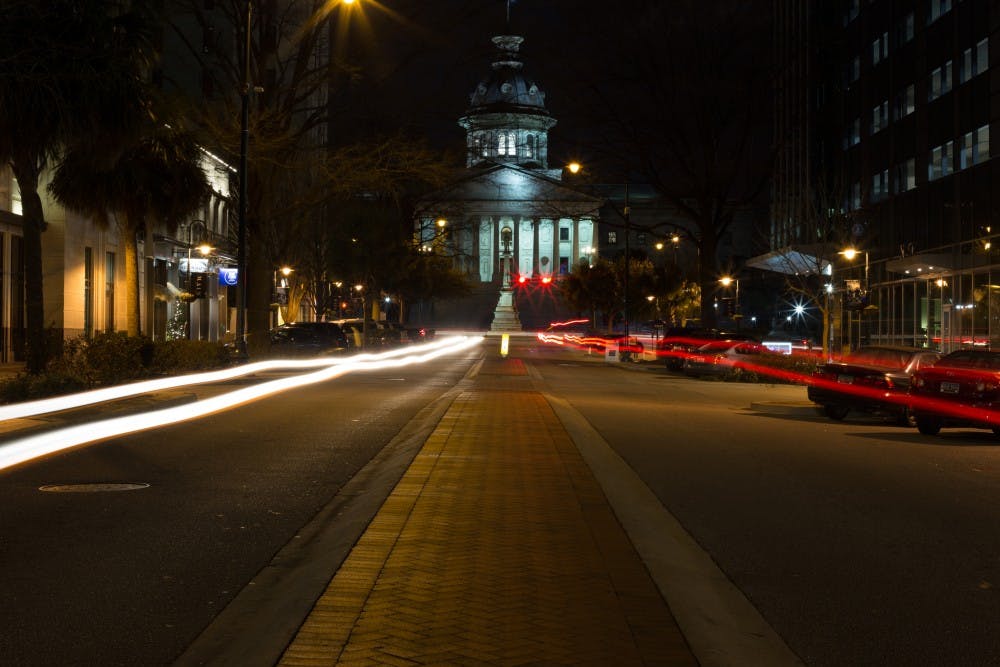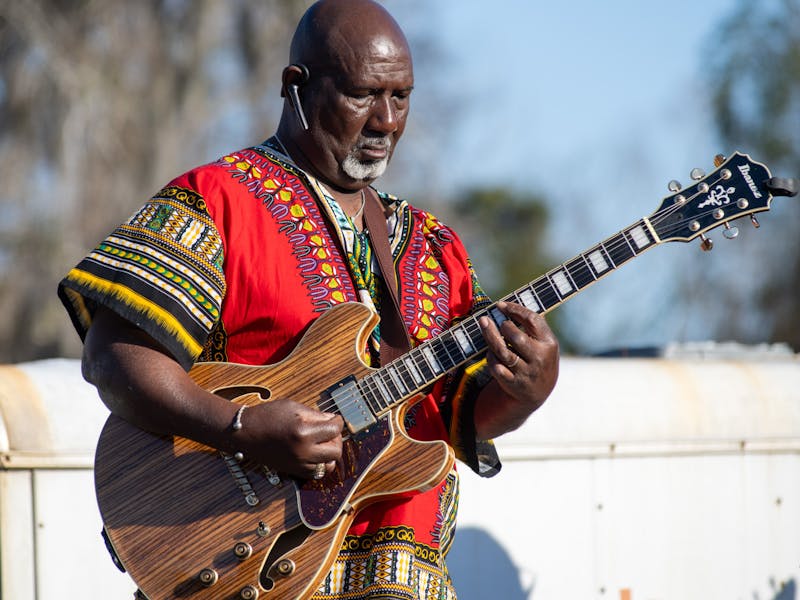No one knows how many pages textbooks will devote to President Trump and his campaign, but from his descent down the escalator of his New York City hotel to his walk to the podium before the National Mall, we know they will ascribe at least a solid chapter. Trump and his constituents have garnered over $3 billion of free advertising, a number that has surely swelled since he removed his hand from Lincoln’s Bible on Jan. 20. His first few weeks in office have, like his campaign before, spurned an onslaught of think pieces, breaking news headlines and other miscellaneous coverage, the bulk of which beg the question: is Trump unique?
If your Twitter feed is any indication, the answer is yes. Trump is a man whose first foray into politics has landed him behind the Resolute desk, whose campaign was built on pointed promises and insults and whose first 100 days has and will continue to be fraught with controversy.
Since taking office, Trump has issued over 19 executive orders, actions and memoranda in an effort to uphold the list of objectives he set out to accomplish in the first three months of his tenure at the White House. Among these, the orders to enact a 90-day travel ban on citizens from seven terror-prone Middle Eastern countries and to resume construction on the Keystone XL and Dakota Access Pipeline have been met with heavy resistance.
On Pennsylvania Avenue, Trump’s questionable cabinet picks have raised the brows of many in Washington, most notably Attorney General Jeff Sessions and Secretary of Education Betsy DeVos. The exodus of officials and employees from the State Department and alleged censorship of published information regarding climate change from the National Parks Service have mired the intents of Trump, and it seems that in this regard he is very much without comparison.
“The extent to which they’ve cleared house among government agencies is unique,” Professor Robert Oldendick says. He specializes in American politics and public opinion, and on the subject of parallels to Trump, he acknowledges that there are similarities to other presidencies, albeit few. “In my lifetime, all of the presidents come in, whether its Kennedy when he took over for Eisenhower, then Johnson and even Nixon when he took over for Johnson, and there was a change of parties, there was turnover, but there was always a recognition of continuity.”
Oldendick offered up the election of Andrew Jackson in 1828 as a comparison to Trump, and while the electorate was much smaller in those days since only white men could vote, Jackson’s rise to power echoes Trump’s in many ways.
“It was the same type of transition from the establishment and the people that had been there. He came in and really shook things up,” Oldendick says. “He essentially fired everybody. All of his friends got jobs. It was a complete disruption and a complete turnover.”
The American public has met Trump with an unprecedented response of its own. The day after the inauguration saw the largest protest in U.S. history as over 3 million people took part in the Women’s March on Washington D.C. and sister marches across the country. Fourth-year public relations major Cat Sullivan drove to D.C. to attend the Women’s March after a snap decision. “I had woken up on Friday as his right hand was in the air and I just snapped. I was like, this is happening. This is real. We have to do something.” Sullivan says.
This election has elicited outcries from all demographics, whether in wholehearted support of Trump or pure condemnation. Social media’s ease of engagement and spread of information has made for a seemingly endless discussion and takedown of Trump and his policies. Oldendick noticed a rise in engagement among his students, but the polarizing nature of the election prompted him to reconsider just how many were actually involved and active.
“I would say that overall it kind of averaged out. There was not a great deal more interest among college students because there were some people who were really excited to vote for Trump, and some who were really excited for the opportunity to vote for Hillary and the first woman,” Oldendick says. “There were others who, given other interest, plus being the first campaign they could actually vote in, got turned off by all the negativity.”
This “turn off” is quantified by the Center for Information & Research on Civic Learning and Engagement (CIRCLE). They estimate that around half the number of eligible voters between the ages of 18 and 29 cast ballots in November, coming in below the estimated general voter turnout rate of around 58 percent. According to CIRCLE about 55 percent of that same group supported Clinton, compared to the 60 percent who supported Obama in 2012. Millennial support for Trump was roughly the same as Romney in 2012, around 37 percent.

“I’ve noticed people getting involved after the fact, more so than during. I felt like I was pulling teeth trying to get people to phone bank or knock on doors during the election,” Sullivan says. This is something that Oldendick echoes. Trump’s campaign promises seemed like empty promises on face value, but as he’s stuck to his guns — er, pen — and moved forward with his plans for the wall, travel ban and other egregious policies in an effort not to alienate his followers. His resistance has gained momentum as well.
“If you voted for Trump because you’re fiscally conservative, you should be outraged that he wants to use your tax dollars to pay for this wall,” Sullivan says. “The policies and things that he’s saying are not things that the Republican Party has historically valued.” She cites her father, a lifelong Republican, as an example who thinks Trump has deviated from the Republican ideals that his supporters associate him with.
“I can disagree with plenty of Republicans, but this is separate animal to me,” Sullivan says.
Trump’s divisiveness isn’t just being reflected in the polarization between Democrats and Republicans, but within the GOP as well. Sen. John McCain has been a vocal dissenter on the travel ban, while Secretary of Homeland Security John Kelly deferred from Trump and supported the report by the CIA of Russian interference in the election. While these may be moral dissents rather than full policy opposition, they do indicate something that the next four years may exacerbate.
“I don’t think the divide is between [Democrats] and [Republicans] in Congress. It’s really going to be between Trump and Congress, and the Republicans particularly,” Oldendick says. “Trump put out this bold, expensive proposal to deal with infrastructure but without any indication of where that money is going to come from. I don’t think that the Republicans in Congress will stand for a tax increase, or a large enough one that would pay for that.” He says you’ll want to watch for the divide between which Republicans return to their ground on traditionally conservative views and which ones let laws roll through unimpeded.
Sullivan hopes the protests are just the beginning of a greater mobilization. “I think that most people will just do the minimum and show up,” she says. “But even that small percentage of people that have been lifelong avoiders of politics and are just now like, ‘Oh my god, this is going to affect my neighbors and me,’ those people matter. Potentially that will be enough to work locally and regionally and get the work done to block these orders and these actions and make a statement.”
Trump’s administration has pulled intense reactions from every sector of the country, and while this is nothing unheard of from a presidency, it’s the scale of these reactions that is. Trump has uniquely impacted Washington, the GOP and the American people, and it’s only the first 100 days.



